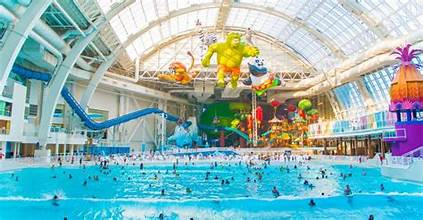North Texas (NT) has recently made headlines by rolling out a new digital water meter system. This upgrade, while primarily seen as a technological improvement, has opened up deeper conversations—ones that go beyond plumbing or infrastructure.
As NT modernizes its public utilities, many locals and observers are asking: What does progress look like today? More importantly, what does the American Dream mean in the face of modern problems like rising living costs, housing shortages, climate change, and social inequality?
This article explores how a simple utility update reflects a bigger national conversation about modern dreams, expectations, and realities in America.
NT’s Digital Water Meter Rollout: What’s New?
The North Texas Municipal Water District (NTMWD) has announced a complete transition to smart water meters across its service regions. These meters allow real-time tracking of water use, offer leak detection, and let users monitor their consumption from mobile apps.

According to the NTMWD official site, the goal is to promote water conservation, improve billing accuracy, and reduce human error. Many residents received notices this month that their older analog meters would soon be replaced by digital units, with installation already underway in some neighborhoods.
“This is a necessary step,” said water systems manager Rick Andrews. “We need smarter solutions in a growing region like North Texas. But it’s not just about water; it’s about sustainability, efficiency, and long-term planning.”
Why a Water Meter Upgrade Is More Than Just Technology
At first glance, a utility upgrade might not seem like a topic that relates to dreams or values. But for many Americans, this shift symbolizes something bigger—a struggle to balance tradition and innovation.
The American Dream, once centered on owning a home, having a steady job, and raising a family, is evolving. With rising utility costs, student debt, and economic uncertainty, today’s younger generations view success differently.
“I rent an apartment, work two jobs, and still can’t save enough to buy a house,” said Lauren Mendez, a 29-year-old marketing assistant in Plano. “If we’re being told to use less water, drive electric, and pay more for everything—what is the American Dream even supposed to be now?”
Smart Utilities and Smart Questions: Redefining the Dream
Across the U.S., cities are upgrading infrastructure—adding solar power, EV charging stations, fiber internet, and smart water meters. These updates reflect the country’s shift toward sustainability and data-driven systems. But they also raise essential questions:
- Who benefits from these upgrades?
- Are lower-income families being left behind in the name of progress?
- Can technology fix deeper issues like economic inequality or housing shortages?
As these changes take place, Americans are forced to reconsider what success looks like. Is it still about owning property, or is it now more about having access—to clean water, reliable internet, affordable rent, and better jobs?
In a recent Pew Research report, over 60% of Americans said that the American Dream feels “out of reach” compared to previous generations.
How NT’s Upgrade Reflects National Priorities
NT’s water meter system is just one example of how local governments are adapting to climate and economic pressures. Smart meters can reduce water waste, save taxpayer money, and give residents more control over their bills. But some critics warn that such tools might not be accessible to all.

“If you’re a family struggling to pay rent or utilities, having an app to track water won’t solve your bigger problems,” noted urban policy expert Dr. Janice Hughes. “It’s helpful, yes. But it also reminds us that tech upgrades aren’t the same as economic justice.”
That’s where the connection to the modern American Dream comes in. As technology pushes forward, the idea of fairness and opportunity must also keep pace.
Residents React: Hopes and Concerns
While some NT residents welcome the changes, others feel wary. Many wonder if the new system will increase surveillance or lead to higher bills. Others see it as a step toward a smarter, more sustainable future.
“It’s cool that I can see my water use in real time,” said Tyrone Carter, a Garland homeowner. “But I also want to know—what happens if the system goes down? Or if the data is hacked?”
These questions are fair. And they’re part of a larger debate happening across America: Can we build smart cities without losing human values? Can we pursue innovation without widening the gap between rich and poor?
Conclusion: A Meter That Measures More Than Water
The NT water meter upgrade is more than a technical update—it’s a mirror of our national identity crisis. As we install smart devices, we must also ask smart questions about who we are and what we stand for.
The American Dream, once a fixed concept, is now fluid. For some, it still means homeownership and independence. For others, it means stability, fairness, access to services, and a life with dignity—even if it looks different from past generations.
In the end, every new meter, app, or upgrade is not just about efficiency—it’s a chance to measure what really matters.
Suggestions for Further Reading
- NTMWD Smart Meter Program
- Pew Research: Views on the American Dream
- Brookings: Smart Cities and Inequality
- U.S. Census Bureau: Homeownership Trends
Also Read – Massive Rooftop Solar Project to Power Maryland Communities Soon






